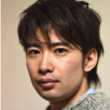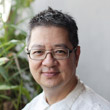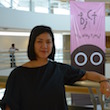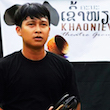Home » ricca ricca*festa Event Reports » Melissa Tan
ricca ricca*festa 2016 Event Report
Background
The NAC was invited by ricca ricca*festa, an Okinawa-based childrens theatre festival, to attend the inaugural Asian Theatre for Young Audiences Network (Asian TYA Network) forum. The aim of the Asian TYA Network is to promote greater awareness about Theatre for Young Audiences (TYA) around the East and South East Asian region, and to exchange best practices and share resources amongst members. The ricca ricca*festa featured 32 TYA performances over a week, with shows from Belgium, Sweden, Japan, Korea and Spain. Most of the performances were under 60 minutes long and non-verbal, catering to children aged 0-8.
Purpose
This trip to Okinawa is part of NAC's efforts to contextualise TYA for Singapore and for the NAC to learn about the latest developments in the international and regional TYA scene.
Delegation
The NAC was represented by Deputy Director/ Arts & Youth Melissa Tan.
Key Learning Points
(A) Opportunity for members to leverage the Asian TYA Network
Today, there are several TYA associations/networks around the world. These vary in terms of their purpose, size and level of activity. Prior to forming the Asian TYA Network, ricca ricca*festa formed the Asian Alliance of Theatre Festivals for Young Audiences (Alliance). It was observed during the forum that there was a meaningful shift away from the gathering being solely a festival marketplace to a more collaborative format where South East Asian (SEA) participants were encouraged to share more about recent TYA developments in their respective countries and discuss opportunities for mutual support.
The Asian TYA Network forum was well attended with 18 representatives from nearly every ASEAN country. It was observed that feedback was positive, with many participants welcoming more sharing on how to be plugged into resources and opportunities around the region. One interesting finding was that the Japan Foundation supported the first edition of the Bangkok International Children’s Theatre Festival (BICT) to present not only a Japanese production but also a new Indonesian co-creation project as well. To the credit of the Japan Foundation, this is a stellar example of regional collaboration.
On the European side, there are a few sub-groups under the larger ASSITEJ International umbrella. One of the more recently-formed groups is Small Size, which focuses on TYA in early childhood. Several European representatives, from organisations such as Creative Scotland and Imaginate, who attended the Asian TYA Network events expressed interest in collaborating with Asian TYA members to co-create and/or co-present works for the young, citing the benefit of potentially leveraging the Asian TYA Network rather than bilaterally engaging countries one-on-one.
(B) Different approaches required to nurture TYA development in Singapore
Whilst many participants cited audience development as a key driver for investing in TYA, yet others emphasised the need to respect children as appreciative individuals who are able to engage meaningfully today, rather than as potential grown-up consumers of the arts.
Another theme running through the discussions was that the philosophy and aesthetics of TYA or ‘Baby Drama’ necessitated that works be presented in small, intimate spaces, in a repertory style. This is because often in TYA, the performer needed to have direct eye contact as the child is addressed as an individual and viewed as co-creator of the performance. The physical environment should be made safe and comfortable for the child, doubling up as a play area for parents and children to linger on after the performance. This was observed to be true of most of the performances featured at the ricca ricca*festa, with audience capacity ranging from just 20 to fewer than 100. Another observation was that these performances should have longer runs, both to facilitate artists’ learning through watching one anothers shows, as well as to allow word-of-mouth publicity to reach potential new audiences. Producers gave feedback that word of mouth was important in TYA as non-verbal, experiential works were difficult to market commercially.
Ms Diana Krzani Tepavac, President of ASSITEJ Serbia, who co-presented the Baby Drama Symposium, recognised the cost-intensive and non-profitable nature of TYA and urged practitioners to be resourceful in seeking funding for TYA projects, looking beyond arts funding bodies towards organisations with a broader social agenda such as inclusivity or education.
One of the implications of the above two approaches is in the evaluation of TYA projects and programmes. At the forum, there was no conclusion on how best to ascertain the artistic experience for the child. There is also limited discussion on how to measure the impact of TYA on adjacent fields such as child development. This would be an important area to look into for the further development of TYA in Asia.
Next Steps
The organisers of the Asian TYA Network intend to embark on the next phase in 2017. The plan is to arrange for members to conduct research visits to selected SE Asian countries with the aim of deepening understanding of the Southeast Asian TYA landscape. NAC is open to supporting local practitioners in Singapore to host one of these visits, with the objective of providing TYA practitioners in Singapore with co-creation opportunities.
Melissa Tan
National Arts Council, Singapore
Deputy Director, Arts & Youth
































